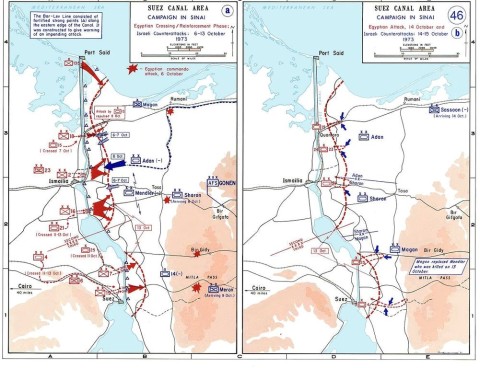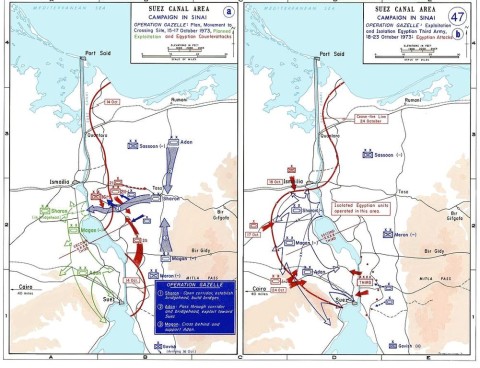In History Today, Colin Shindler reviews a recent collection of essays on the initially successful surprise attack on Israeli forces by Egypt, Syria, and a token brigade from Jordan in early October, 1973.
During the early afternoon of October 6th, 1973 the Egyptian army crossed the Suez Canal and overran the Israeli Bar-Lev line on the eastern bank. This assault on Yom Kippur, the holiest day in the Jewish calendar, was designed to reverse Israel’s conquest of the Sinai peninsula during the 1967 Six Day War.
Six hundred Syrian tanks, outnumbering Israel’s 178, also advanced to reclaim the Golan Heights and to threaten a penetration of Israel’s heartland. The mehdal (blunder) indicated a profound intelligence failure and cost 2,691 Israeli lives. Forty years on, Asaf Siniver has gathered his colleagues to dissect this war in a series of essays.
The October or Ramadan War – as it is known in Egypt – is celebrated as a holiday even though Arab losses were around 18,000. The Yom Kippur war – as it is known in Israel – is regarded more as an enforced stalemate, even though Israeli forces crossed back over the canal, encircled the Egyptian Third Army and were 60 miles from Cairo. The Syrians, too, were pushed back and the Israelis shelled the outer suburbs of Damascus. Soviet threats to involve the USSR directly in the conflict forced President Nixon to stop the Israelis in their tracks.

Yom Kippur War – Sinai front 6-15 October, 1973 (via Wikipedia)

Yom Kippur War – Sinai front 15-23 October, 1973 (via Wikipedia)

Yom Kippur War – Golan Heights front (via Wikipedia)




